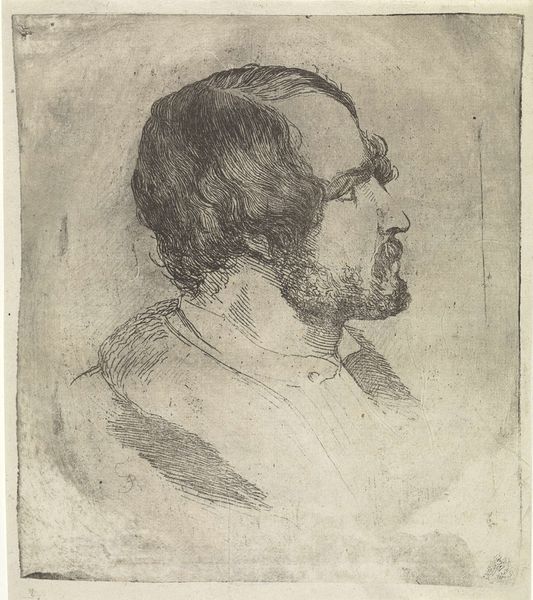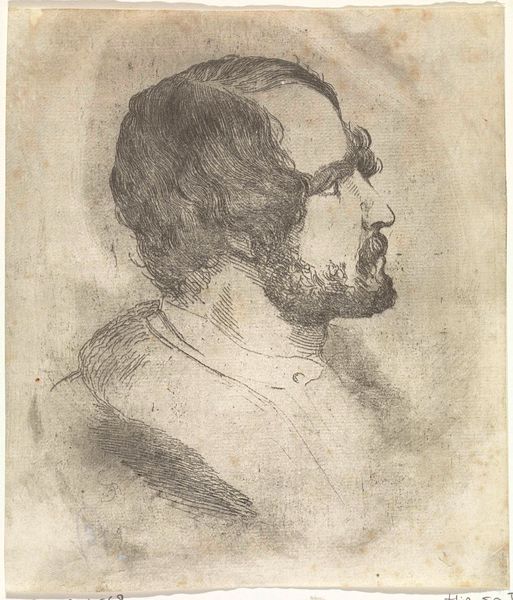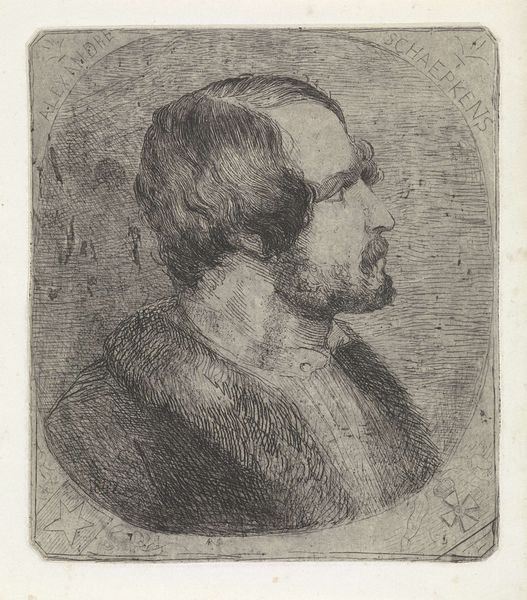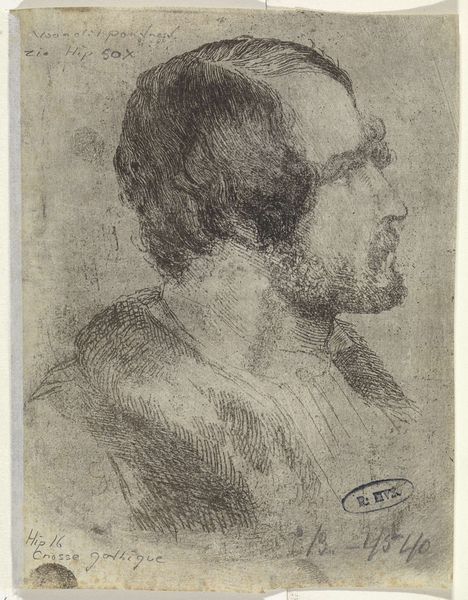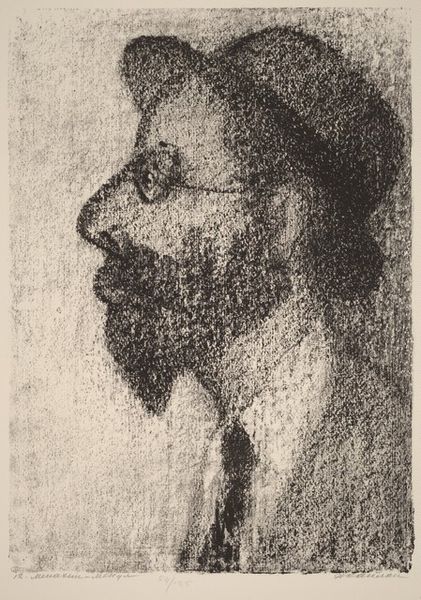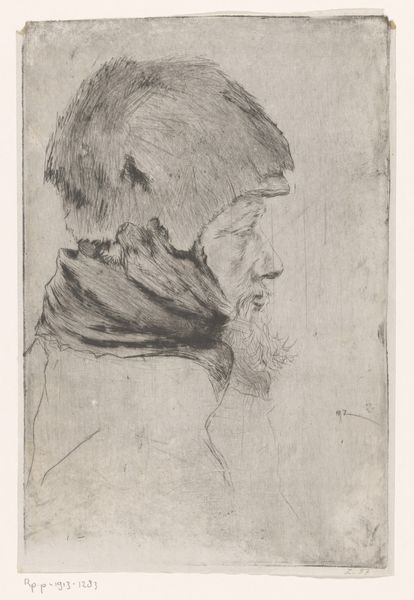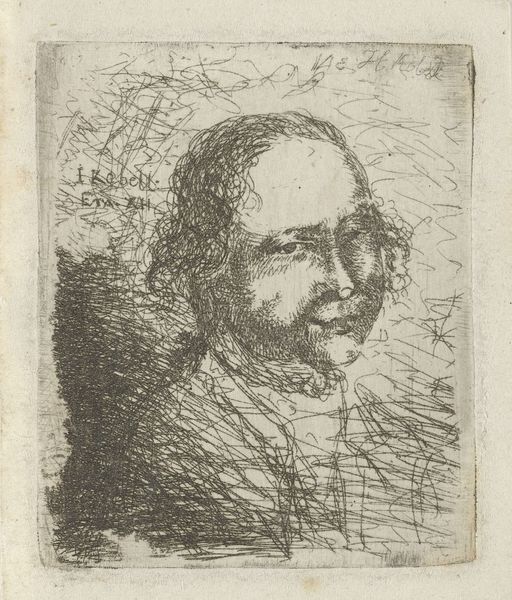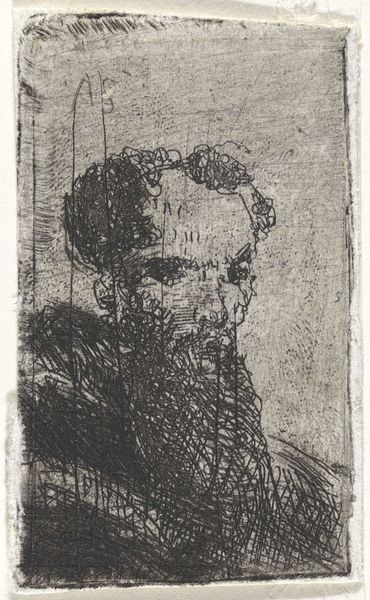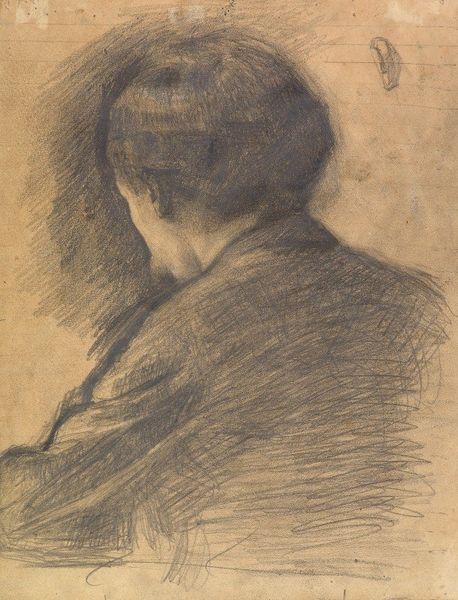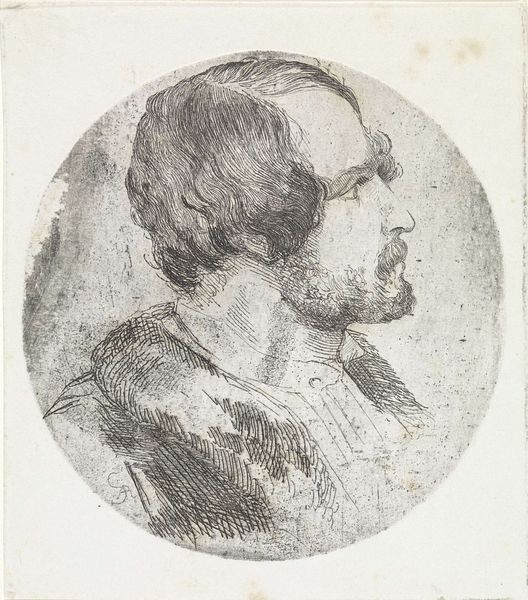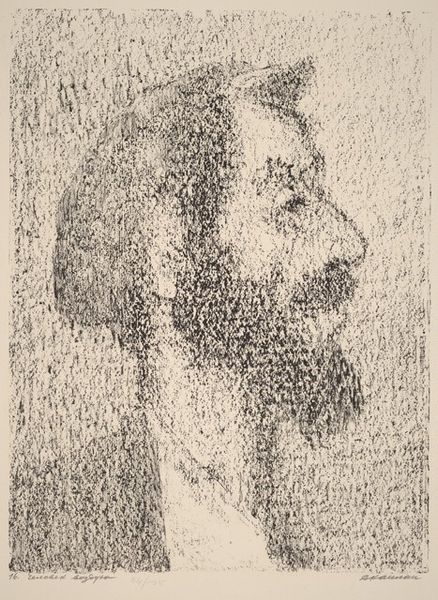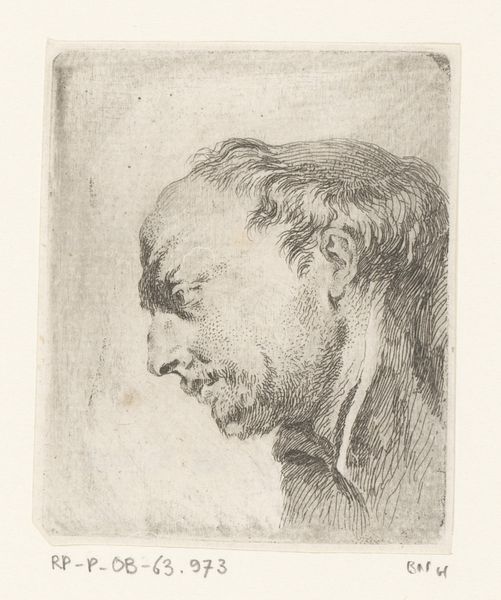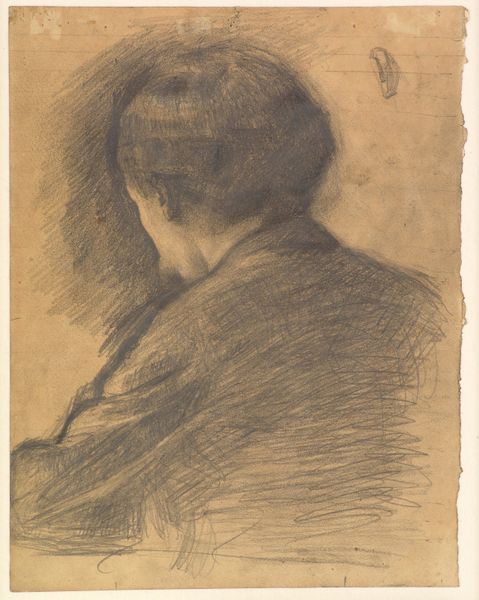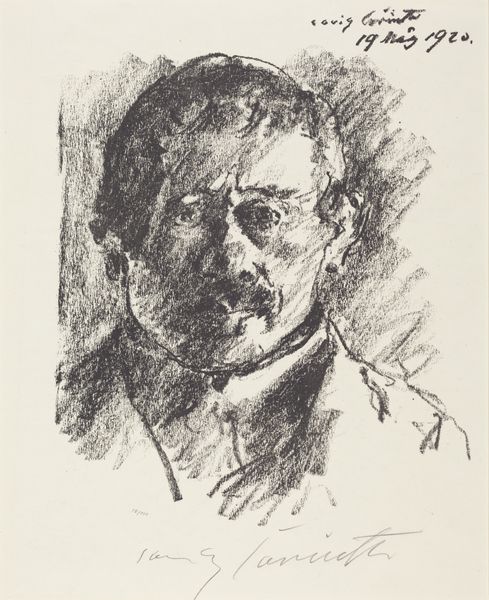
drawing, pencil
#
portrait
#
pencil drawn
#
drawing
#
amateur sketch
#
toned paper
#
light pencil work
#
pencil sketch
#
charcoal drawing
#
personal sketchbook
#
pencil drawing
#
pencil
#
portrait drawing
#
pencil work
#
realism
Dimensions: height 157 mm, width 138 mm
Copyright: Rijks Museum: Open Domain
Editor: Here we have a pencil drawing, titled "Portret van prentmaker Alexander Schaepkens," dating from 1831 to 1904. There's something incredibly raw and immediate about it, almost like a fleeting glimpse captured in time. What compositional elements stand out to you? Curator: The economy of line is quite striking. Observe how the artist employs hatching and cross-hatching to define form and volume, particularly in the depiction of the sitter’s beard and hair. The artist relies almost entirely on tonal variations achieved through the density and direction of the pencil strokes. Notice how the paper itself participates in the representation. Editor: That's true! It's incredible how much depth and texture they achieved with so few strokes. It makes me wonder about the artist's relationship to their subject. Curator: Indeed. One might also consider the compositional weight of the head within the frame. It occupies a significant portion of the pictorial space, drawing our attention to the sitter's features and profile. Do you find any sense of emotional register within the mark making? Editor: I suppose so, it looks almost academic. What else would you like to say about that mark making? Curator: It’s quite telling that we can understand a lot by close observation of tone, space, and balance alone. Did you expect that a pencil portrait could express such subtlety? Editor: Absolutely not! Now, when I look again, I notice new subtleties in shading and line work all over the artwork. It's interesting how formal aspects can inform our interpretations so powerfully! Curator: Precisely. Understanding the structural and material language allows for a richer, more nuanced reading.
Comments
No comments
Be the first to comment and join the conversation on the ultimate creative platform.
